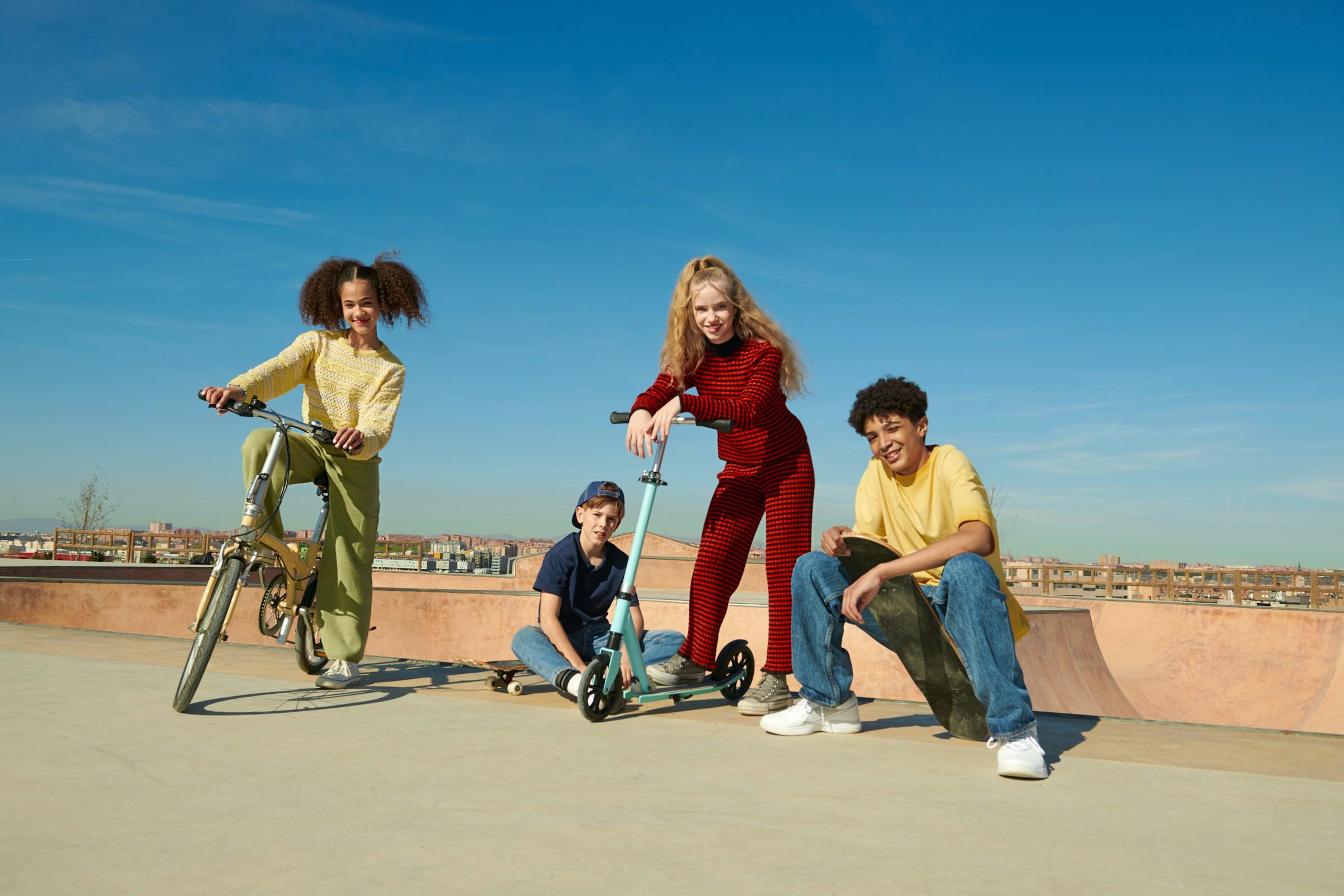The question arrives with frustration baked into it, as if young people have changed in a way that classrooms cannot absorb. Yet classrooms have always been meeting points between the habits of a generation and the traditions of an institution. When the mismatch feels sharper, the instinct is to find fault in the children. A better place to begin is with context. Gen Alpha, the youngest cohort in school today, entered a world where answers travel through screens, where attention is trained by short video and gaming loops, and where authority competes with a chorus of voices that speak in real time. If they feel difficult to teach, it is often because they carry a different definition of what learning looks like, how time should move, and who deserves their focus.
A common claim is that attention spans have collapsed. A more accurate reading is that attention has been retrained. For much of Gen Alpha, the earliest lessons did not arrive from a textbook or a whiteboard. They arrived from creators and older siblings who made tutorials that begin with a hook in the first seconds and deliver a result before curiosity cools. The rhythm of a traditional lesson places objectives and context at the front and payoff much later. On a platform, payoff comes early and context follows. When a student slumps at the opening of a lecture, it is not always laziness. It may be a format clash between two styles of narrative time, one designed for a classroom and one designed for a scroll. Teachers perceive indifference. Students perceive delay. Neither side is lying about their experience.
The pandemic deepened this divide by turning homes into classrooms and classrooms into tabs. For many Alphas, school memories include frozen screens, delayed audio, and a parent working within earshot. Authority came filtered through a buffering icon and a chat box. When they returned to physical rooms, some virtual habits persisted. If learning can happen anywhere, then the teacher’s room becomes one venue among many, not the central stage. The class still matters, but the aura that once surrounded the space is thinner. To a child formed by hybrid life, a room is a context, not a command.
Gen Alpha also moves comfortably inside digital worlds where knowledge flows sideways and status is earned by contribution. In a Minecraft server or a Roblox economy, the best builder is not necessarily the oldest. A twelve year old might teach a fourteen year old because skill, not seniority, organizes the hierarchy. That logic does not disappear at the classroom door. It shapes expectations about how respect is granted and how fast a grown up should prove the relevance of a lesson. A teacher’s title still matters, but proof of usefulness matters more. When a student pushes back with a blunt question or an alternative method learned from a tutorial, the tone can feel confrontational. The intent is often practical. Show me how this helps me do the thing I care about. Show me soon.
The smartphone complicates this negotiation because it functions as a prosthetic memory and a workshop in the pocket. For many Alphas, photos are notes, screenshots are citations, saved videos are reference manuals, and search history is a record of panic and curiosity. Asking them to put it all away can feel like asking an adult to set aside glasses or a calculator. Critics call this dependence. Children call it normal. The conflict hardens because both claims are true from within their own eras. A class can protect collective focus by limiting devices. A student can protect personal efficiency by relying on a device. The stalemate repeats until both sides agree on a principle that rarely gets articulated with care. Tools extend human ability, but they also shape it. The question is not whether a tool is allowed. The question is what kind of thinking the class aims to practice and whether the tool supports that thinking or replaces it.
Impatience is another common complaint, yet the impatience often targets friction that students judge to be unnecessary. A child raised on on demand everything sees the time spent waiting for the entire class to catch up as a tax on momentum. Individual acceleration feels normal. Collective pacing feels slow. This does not mean that community rhythm is obsolete. It means that young people have fewer cultural cues that make waiting feel respectable. Institutions historically taught patience through rituals and queues. Platforms taught immediacy through acceleration and personalization. Education now asks children to carry both timelines within a single hour, and the switch between them is exhausting for everyone.
Language and tone present quieter challenges. Subtitles defaulted to on have taught many children to read while they watch. Messaging across platforms trained them to modulate voice without pausing to reflect on the norms of each audience. A direct message to a friend and a short email to a teacher can happen on the same device within the same minute. Context collapses. The tone that lands in a classroom inbox can sound blunt or flippant when it was meant to be efficient. Adults hear attitude. Children hear clarity. Misfires multiply because the line between formal and casual is less about medium and more about mood, and moods shift quickly when communication lives inside a pocket.
The family network shadows the classroom more than before. WhatsApp groups hum after bedtime. Learning dashboards turn progress into a feed that caregivers can review, screenshot, and compare. Some children experience the classroom as a public space even when it is physically private, because they sense a reporting structure waiting at home. Teachers learn to address not just a room of students but an invisible audience who will respond later. The job becomes a blend of instruction, translation, and interpersonal diplomacy. None of this is entirely new. The volume has changed, and so has the expectation that transparency should be continuous.
Safety culture adds weight in a well intentioned way. To prevent harm, institutions erect rules and filters that reduce risk and delay access to anything that might spiral. Students feel the walls and test them, as children always have. What differs is the speed at which a workaround appears when the rule feels arbitrary. A group chat can produce a solution within an afternoon. The cat and mouse cycle increases mistrust and burns time that could have gone to shared goals. The result is a classroom that feels both more controlled and less governable, a paradox produced by safety protocols and the creativity they inspire in response.
Artificial intelligence sits in the middle of these tensions like a mirror. It can draft an essay, outline a project, or solve a problem set within seconds. A student can use it as a shortcut that avoids struggle. Another student can use it as a primer that starts the struggle earlier by removing blank page fear. Teachers are told to integrate it and to guard against it at the same time. For a child who sees AI as a calculator for everything, a ban feels arbitrary. For an adult who sees AI as a threat to original thought, enthusiastic adoption feels reckless. The disagreement rarely gets resolved by rules alone because it is not about the device or the model. It is about the definition of learning. If learning is the process of making meaning through effort, then any tool that collapses the process into a product must be used with caution. If learning is the ability to solve authentic problems with the best tools available, then AI becomes part of literacy. A classroom can hold both views if it names the difference and designs assignments that reward visible thinking, not just tidy output.
Another friction point appears in how school and platform culture treat the display of effort. Classrooms often require students to show their work, reveal process, and submit drafts that wear their seams. Online life rewards the opposite. You watch a string of tutorials, remix and practice in private, and publish only when the output looks effortless. Children absorb this aesthetic early. When a teacher insists on seeing the steps, the request feels like an intrusion into a workshop that is supposed to be hidden. This is not laziness. It is a learned performance code. The solution is not to abandon process, but to make process feel like a craft in its own right, something worth exhibiting rather than something to be endured.
Identity and belonging thread through all of this. The internet offers micro communities that feel safer than a classroom row, especially for students who are neurodivergent or who are exploring aspects of identity for which they lack local models. Language for experience arrives earlier and in greater variety. That can be liberating, and it can be overwhelming when labels become expectations rather than invitations. Teachers carry the task of making lessons land without tripping alarms from any direction, a task complicated by the speed at which online discourse reframes what counts as sensitive. The work requires judgment, humility, and a rhythm of repair when misunderstandings happen. None of these traits grow in a climate of constant performance anxiety.
The authority shift is perhaps the deepest structural change. Expertise once arrived through a person at the front of the room and through texts chosen by that person or by an institution. Today expertise arrives through many people at once, some credible and some chaotic, and through a search bar that does not care about seniority. A student who questions a premise out loud may feel emboldened by a culture that rewards calling things out. The tone can be off, and sometimes the critique is poorly aimed. Yet the curiosity underneath is a resource. The old etiquette that protected fragile egos does not map neatly onto a world where knowledge is always provisional and where anyone can pull up a counterexample in fifteen seconds. What students need is not a lecture on manners alone. They need models of rigorous disagreement that do not humiliate, and they need clarity about when a challenge is about truth and when it is about posture.
Feedback cycles reveal the final layer of strain. Platforms deliver response within minutes. Games patch bugs overnight. Consumer services iterate on a weekly or monthly cadence. Institutions move on semesters and budgets. A child raised inside real time expects timelines to bend toward speed. When school cannot match that pace, disappointment hardens into distrust. This does not mean that education should mimic the tempo of hype. It does mean that students respond when teachers offer faster micro cycles of reflection and adjustment, even within the constraints of larger schedules. A check for understanding that takes three minutes can reset a room more effectively than a unit test that arrives weeks later. Speed, in this sense, is not spectacle. It is care.
So why is Gen Alpha so hard to teach. The answer is that teaching assumes a flow of knowledge in one direction, for a set period, inside a set space. Gen Alpha’s life rewrote all three assumptions. Knowledge flows in loops through peers, creators, and tools. Time flexes between immediacy and deliberation depending on context. Space is a tab that never fully closes. What looks like defiance is often a request for translation across those dimensions. The task is not to surrender to every platform habit or to mock every tradition that feels slow. The task is to name the differences and to design bridges that students can cross without pretending to be someone else.
A bridge can be as simple as starting with a concrete problem that holds real stakes and then layering the necessary concepts behind it. It can look like inviting students to co create success criteria that reward evidence of thinking, not just polish. It can mean treating the phone as a research tool within structured windows rather than as an enemy that must be confiscated at all times. It can mean using AI to generate multiple pathways into a topic while reserving core reasoning for human minds, and then asking students to annotate exactly where the tool helped and where it failed. It can mean choosing fewer rules with clearer rationales and enforcing them with honesty about trade offs. None of these moves erase friction. They turn friction into traction.
The point is not that teachers must become entertainers or influencers. The point is that they must be translators and designers who understand the cultural inputs that shape how children learn outside of school. Students are not audiences to be controlled. They are partners who arrive with habits that can frustrate and with capacities that can surprise. The more quickly a class can surface the purpose of a task, the more likely a student will meet it with attention that feels voluntary rather than coerced. The more generously a class can read misfires as format problems rather than moral failings, the more space there is for repair.
When people ask why Gen Alpha is so hard to teach, they are also asking whether adults are willing to share the stage with systems they do not control and with children who learned to learn in public. That is not a failure of children or of teachers. It is a culture mid update. The bell still rings. The room still fills. The lesson still begins. Under the noise, a quieter truth is available to anyone who listens closely. We are not only teaching content. We are learning how to learn each other.



.jpg)
.jpg&w=3840&q=75)









